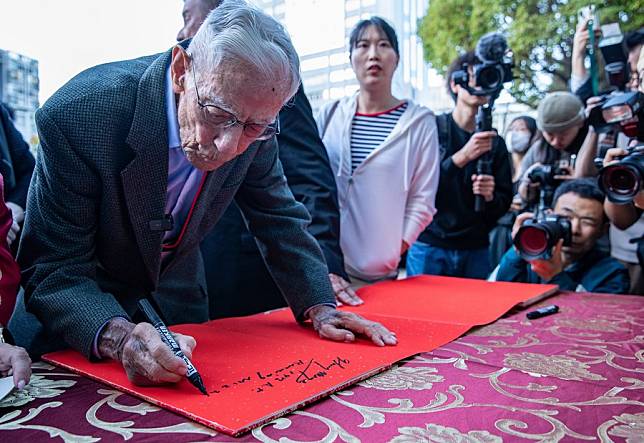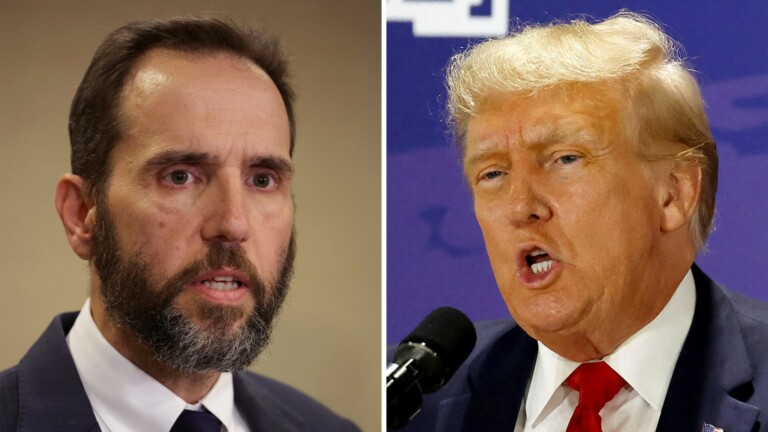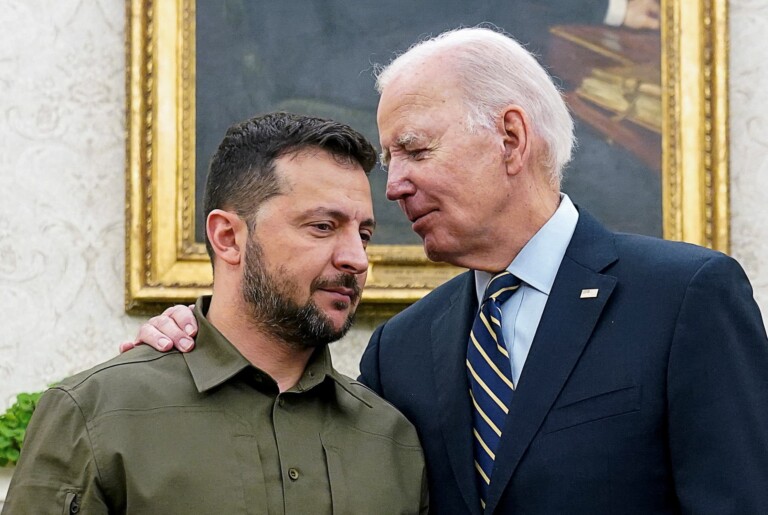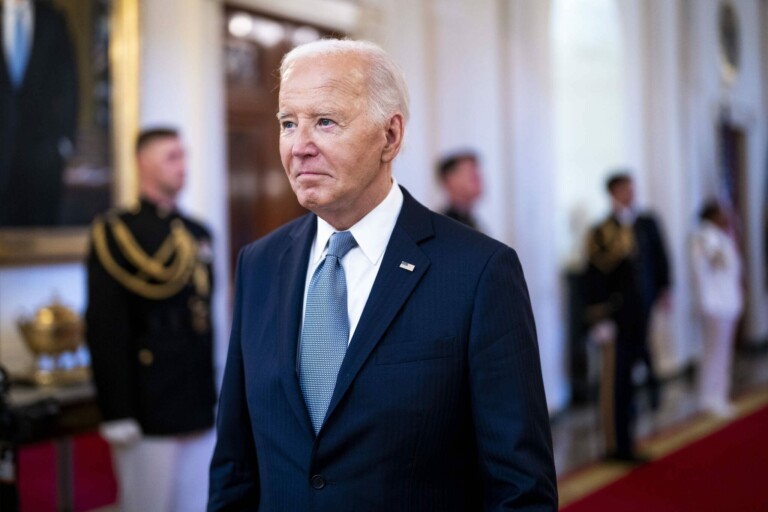In October 2023, U.S. veteran pilot Harry Moyer, who was turning 103, climbed the Great Wall in Beijing where he made his birthday wish: “happiness, blessing, and peace throughout the world, and companionship of people around the globe.”
Moyer, a former member of the legendary American Volunteer Group, better known for their moniker “Flying Tigers” for their iconic tiger-winged emblem, returned to China eight decades after his courageous service in South China alongside the Chinese against the Japanese aggression during World War II.
A new chapter was added to the memories of these comrades-in-arms in September, when Moyer and his fellow pilot Melvin McMullen, and Jeffrey Greene, chairman of the Sino-American Aviation Heritage Foundation, received a letter from Chinese President Xi Jinping, who recalled the epic of the Flying Tigers and prized their enduring bond with China, a nation they regarded as their second home.
WARTIME CAMARADERIE
In late August, Greene decided to write a letter with Moyer and McMullen to the Chinese leader, inspired by Xi’s meeting with former U.S. Secretary of State Henry Kissinger in Beijing.
“I thought it would be a good time to write to him, telling him what we have done and our willingness to promote the friendship between Chinese and American people,” Greene told Xinhua.
To his surprise, Xi swiftly replied with “a gracious and magnificent letter.”
“In the past, our two peoples fought the Japanese fascists together, and forged a deep friendship that withstood the test of blood and fire,” Xi said in his letter.
“President Xi’s reply letter resonated deeply,” said Greene. “It reaffirmed to the United States and the world that the Chinese people would never forget their old friends — a crucial message we sought to convey to the American people.”
In late October, Moyer, McMullen, and Greene embarked on a trip to China, together with a delegation of around 30 members consisting of families of the Flying Tigers veterans.
Their itinerary included stops in cities like Chongqing and Kunming, places where they or their forebears had fought side by side with the Chinese to guard China’s airspace against the Japanese aggression in World War II.
In the Flying Tigers museum in Kunming in China’s southwestern province of Yunnan, Nell Chennault Calloway, granddaughter of Claire Lee Chennault, commander of the Flying Tigers, couldn’t hold back her tears as she gazed at a photograph of her grandfather.
“It really meant something to be here, where my grandfather had fought, and especially with Moyer, who had come all the way from the United States to join my grandfather’s team,” said Calloway, who took a photo with the image of her grandfather in the museum.
In 1941, Chennault rallied a group of young volunteer pilots, including Moyer and McMullen, from the United States to assist China in defending its airspace against Japanese warplanes.
The Flying Tigers etched their names in history, annihilating over 2,600 Japanese aircraft during the war and flying the treacherous “Hump Route” over the Himalayas.
This route, notorious for its high-altitude terrain and unpredictable weather, was a vital lifeline delivering crucial supplies, fuel, and equipment to Chinese soldiers after Japanese invaders severed their other supply lines.
McMullen, a former aerial gunner and assistant flight engineer, revisited the museum with his family and recollected the Hump flights. “The route was also called ‘Aluminum Trail’ because of the wreckages of the airplanes that were lost along it,” he said. “That is how difficult the flight is.”
The tales of these veteran pilots were often recounted to their families. Some even documented their experiences in memoirs.
David Goodrich, son of the Hump pilot Jack Goodrich, recalled a story from the book of his father describing the challenges he had encountered on his missions.
At that time, there was little modern navigating equipment on the planes, and the extreme weather would disrupt the instruments aboard. Jack Goodrich faced a perilous task: he had to rely on his keen eyes and instincts to navigate and pinpoint his landing spot.
“It was very challenging,” said David, brimming with gratitude. “I am glad he made it and I feel sorry for those whose fathers didn’t.”
“The mission was risky but my father has been proud for the rest of his life that he could help the Chinese people fight against the Japanese,” said Clifford R. Long Jr., son of pilot Clifford R. Long Sr., adding that his father believes he was “doing the right thing.”
The vital role played by the ordinary Chinese people in ensuring the success of the Flying Tigers’ missions is a chapter of history that cannot be overlooked, emphasized Greene.
Many civilian volunteers dedicated themselves to building and maintaining the runways of the airfields for the safe landing and take-off of the Flying Tigers. When Japanese bombers pounded the runways, the Chinese workers were always there to repair.
It was impossible to bomb the airfield out. No matter how much damage Japanese bombers made, the Chinese people could fix them within two hours, General Chennault once said.
During the war, over 2,000 Flying Tigers sacrificed their lives battling the Japanese aggressors for the freedom of the Chinese people, while thousands of Chinese died protecting the American pilots from the Japanese troops, according to official figures.
At a welcome ceremony in Beijing, McMullen recounted how the Chinese villagers rescued the U.S. airmen who were downed by the Japanese forces.
“We all knew that our best chance of survival was to be picked up by a Chinese villager,” said McMullen, adding that the Chinese farmers would hide the American pilots by day and transport them from village to village by night.
The bravery of the Chinese people came at a great cost. Many were tortured or killed by the Japanese army as a brutal retaliation for sheltering the Flying Tigers, and many pilots owe their lives to these brave people, noted the veteran pilot.
EVERLASTING SPIRIT
In the Kunming Foreign Language School built to honor the Hump Route, Moyer’s emotions welled up while watching a musical performed by teachers and students reliving the adventure of the Flying Tigers over the Hump Route.
“As I walked in the auditorium, all the young students started clapping and cheering, and it was just overwhelming,” he said. “They did a beautiful job expressing the story and message (of the Flying Tigers) tenderly and wonderfully.”
Next to a stone Memorial engraved with “The Everlasting Spirit of the Hump,” the veterans and their fellow delegates joined hands with teachers and students to plant a cypress, a symbol of growth and endurance, implying that the spirit of the Hump flight — a legacy of friendship and cooperation between the two nations — would continue to flourish among the younger generations.
In his reply letter, Xi said, “a sound and steady development of the relationship in the new era requires the input and support of a new generation of Flying Tigers.”
In both China and the United States, the enduring bond and camaraderie established during the war by the older generations have been passed down to the youth. Many of them have grown up listening to the shared tales of their fathers and grandfathers, who fought side by side as comrades in World War II.
Since its opening in 2012, the Flying Tigers Museum in Kunming has drawn in over 100,000 teenagers annually. Many of these young visitors, captivated by the history of the Flying Tigers, subsequently become young guides and volunteers, sharing the stories of bravery and sacrifice that define the Flying Tigers’ legacy with the public, said Chen Hao, curator of the museum.
For decades, the Sino-American Aviation Heritage Foundation has worked to raise awareness among Americans about the history of the Flying Tigers through programs that encourage people-to-people exchanges and communication between China and the United States.
Nearly 500 Flying Tigers veterans, and several hundred of their families, have visited China with the efforts of the foundation. Presently, the foundation is dedicated to nurturing dialogue and friendship, advocating for the lasting spirit of the Flying Tigers among the youth of both nations, said Greene.
“To me, the spirit of the Flying Tigers means friendship,” said Jackson Long, the youngest member of the visiting delegation and great-grandson of Clifford R. Long Sr.
“When I go back, I will tell my friends about my trip in China. I will show them the photos I took,” said the 15-year-old, beaming with excitement about his trip to the Great Wall in particular.
“All we can help is to tell our stories to the younger generation. It is my expectation that they would listen to them, understand them and pass them on,” said Moyer.
“We (Chinese and U.S. people) have fought together, and now it’s up to the new generation to do so,” he added.
PEOPLE-TO-PEOPLE EXCHANGES
In various Chinese cities like Chongqing, Kunming, and Liuzhou — places evoking the memories of the Flying Tigers — memorials, statues, and museums stand as solemn tributes to the veterans’ dedications. They are tokens of the genuine gratitude that the Chinese people extend to these pilots from across the Pacific.
As Moyer stood at the site of the old wartime dormitories in Kunming, he was overwhelmed by a rush of memories from the past. Despite the incredible transformation the city had undergone over the past 80 years, he believed that people’s connection remained unchanged.
To him, these people-to-people exchanges were pivotal in fostering the strong ties between the two countries.
Xi noted in his letter that “in growing China-U.S. relations, the hope lies in the people, the foundation lies among the people, and the future lies with the youth.”
It was a belief Moyer held dear as well. “The more people visit each other, the better we will understand each other and appreciate our shared humanity,” said Moyer, noting that people-to-people exchanges, especially face-to-face ones, are a powerful means to eliminate conflicts and misunderstanding.
Echoing his remarks, David Goodrich advised his children not to blindly accept the narratives spun by some politicians or the media.
“I tell them you have to come and see the real China for yourselves,” he said, noting that his own impressions of modern China, relayed from his father’s tales, left a lasting impact.
“Amity between people holds the key to sound relations between states,” said Xi on various occasions. The relationship between nations ultimately hinges on the relationship between their people.
The Chinese president has personally promoted the people-to-people interactions through correspondence with his American friends.
In late August, Xi replied to a letter from John Easterbrook, grandson of former U.S. General Joseph Stilwell who served as commander-in-chief of the U.S. armed forces in the China-Burma-India Theater during World War II and provided support to China’s cause of liberation.
In his reply, Xi thanked Easterbrook for sharing the story about the friendly exchanges between General Stilwell and several generations of the Stilwell family and China. Xi said that from the Stilwell family, he felt the goodwill of the American people towards the Chinese people.
In the same month, Xi wrote another reply to a letter from the U.S.-China Youth and Student Exchange Association and friendly personages from all walks of life in the U.S. state of Washington, hoping that more youths from China and the United States can get to know each other, move forward together, become generational ambassadors of bilateral friendship, and continuously inject impetus into the development of bilateral ties.
“People-to-people exchanges have always been a foundation of President Xi Jinping’s foreign policy, from the Belt and Road Initiative (BRI) to China-U.S. relations,” Robert Lawrence Kuhn, chairman of the Kuhn Foundation, told Xinhua.
Such exchanges are “the foundation of how independent countries with independent interests can best build common understanding and mutual appreciation,” said Kuhn.







